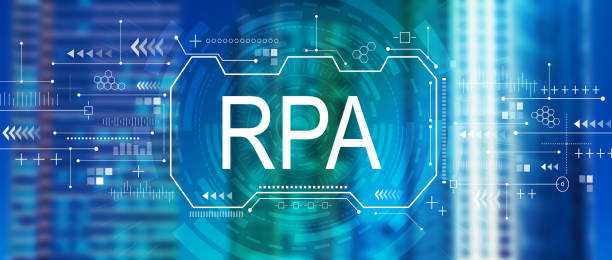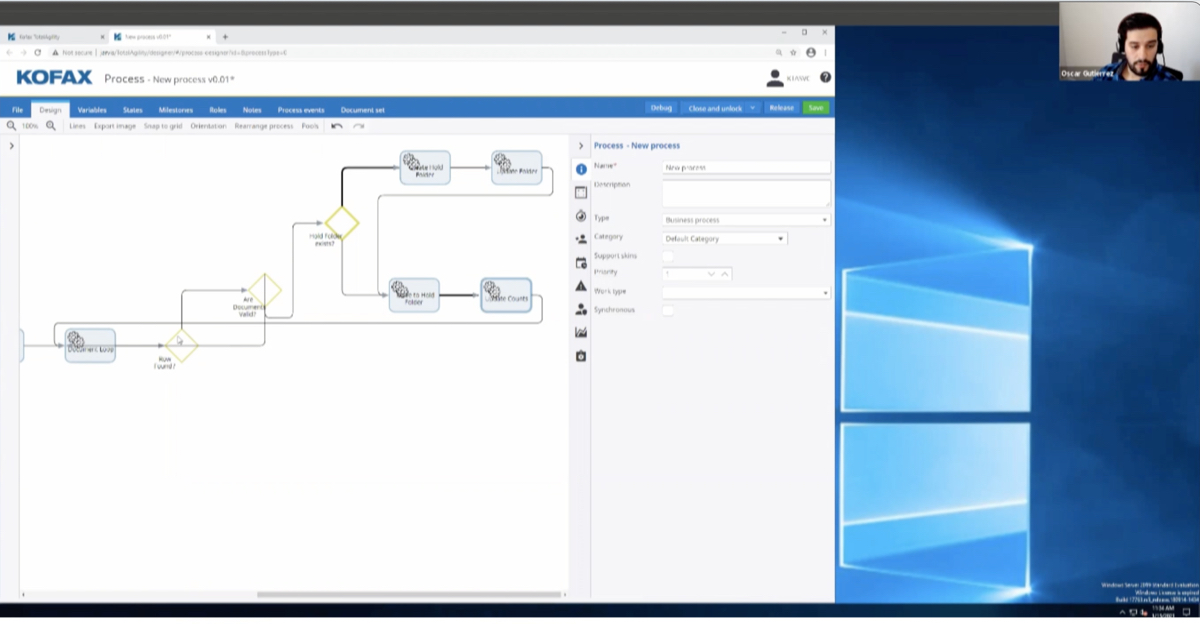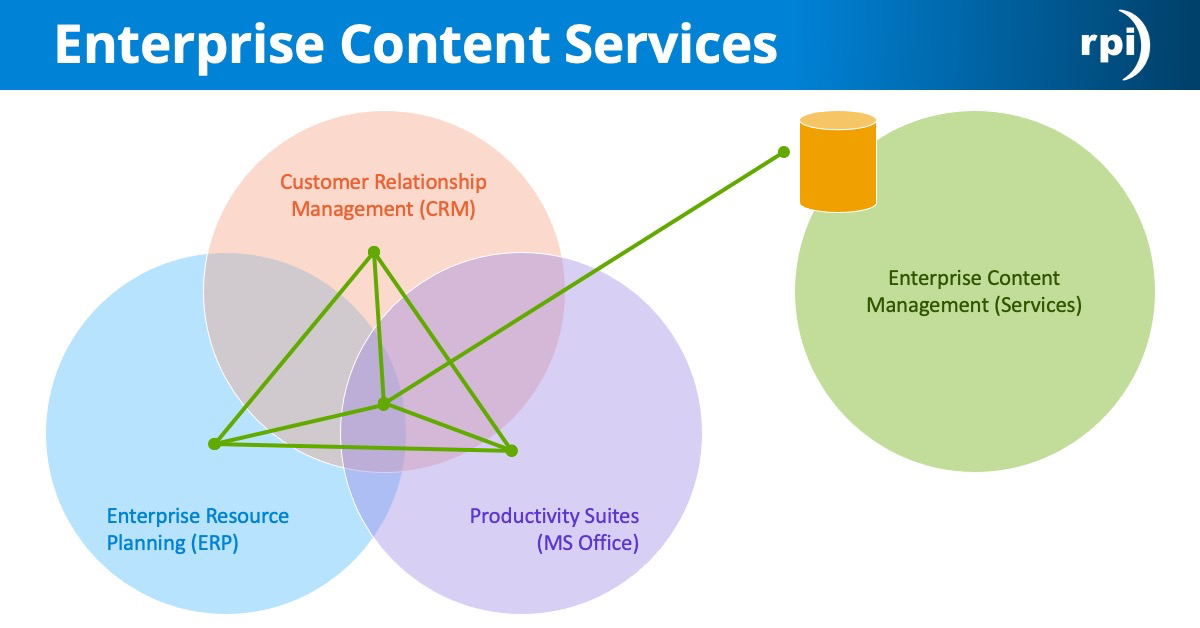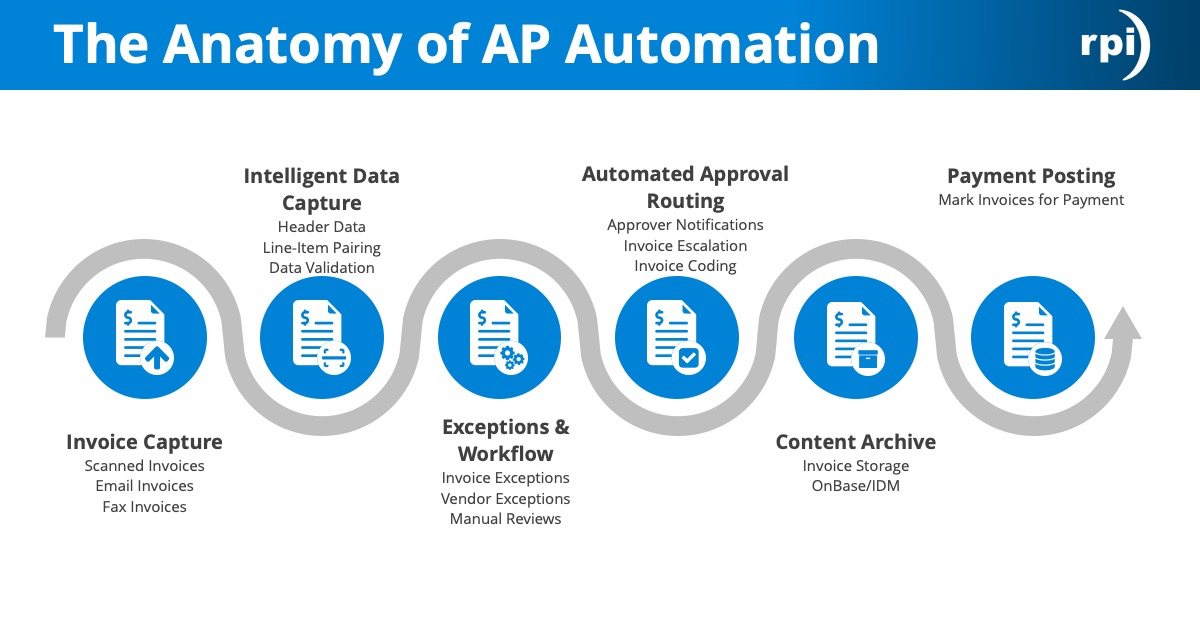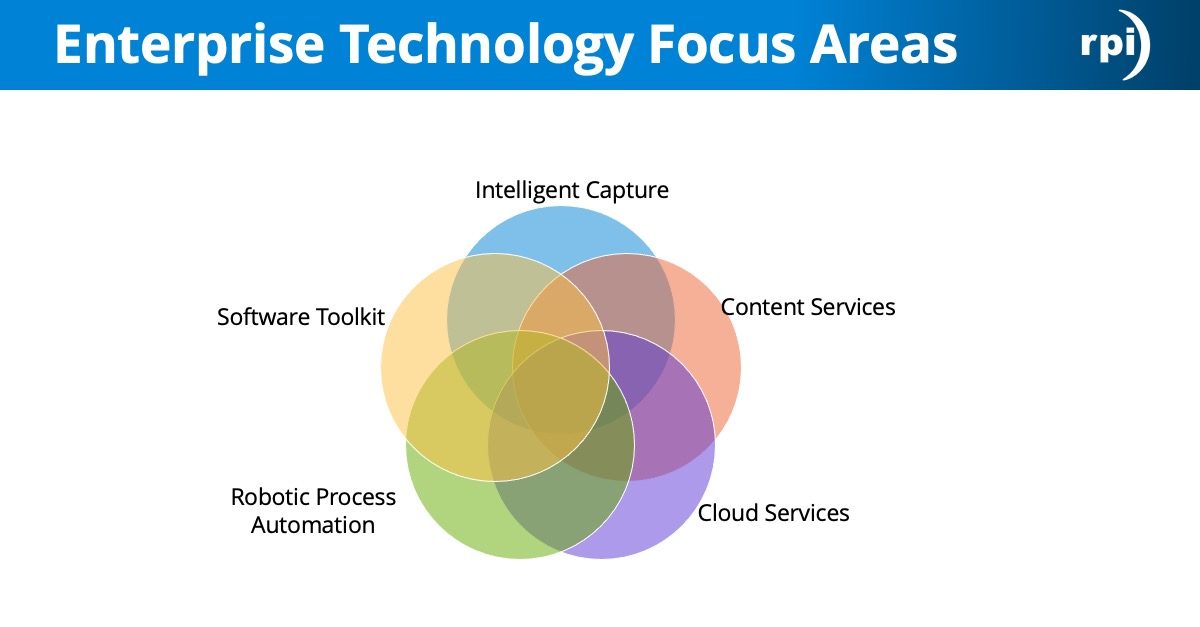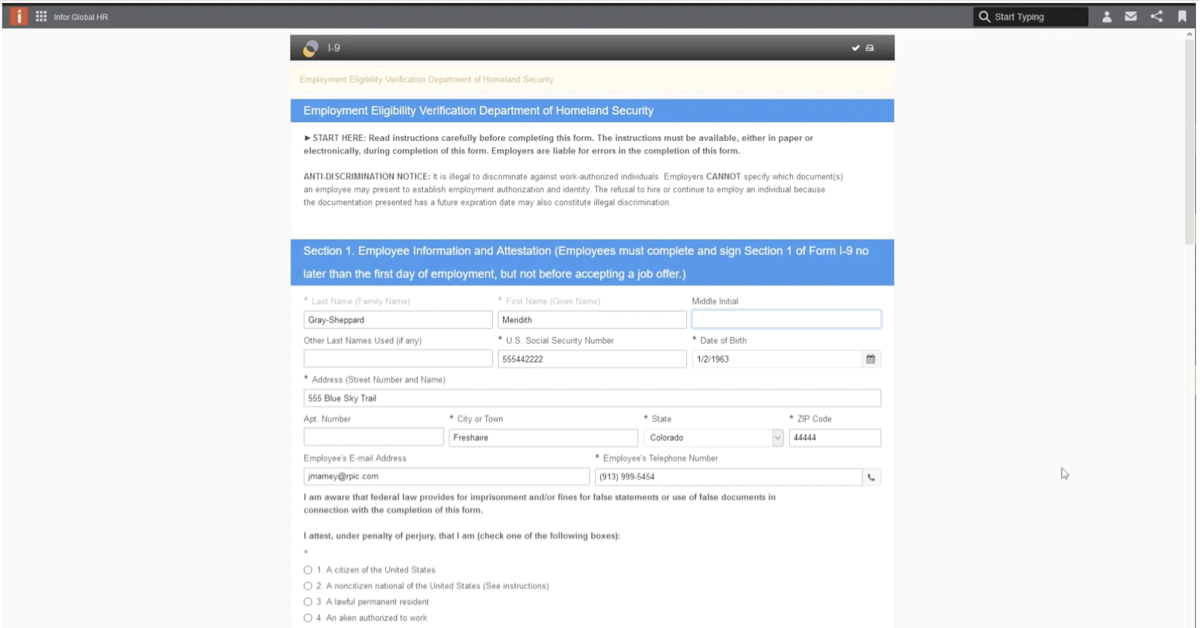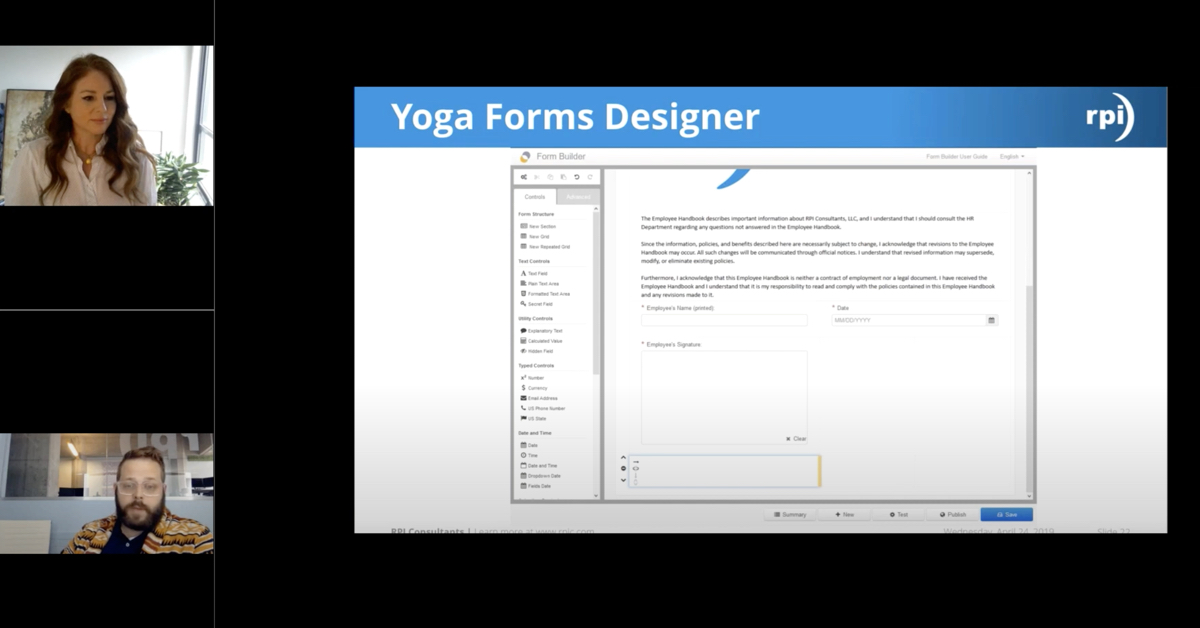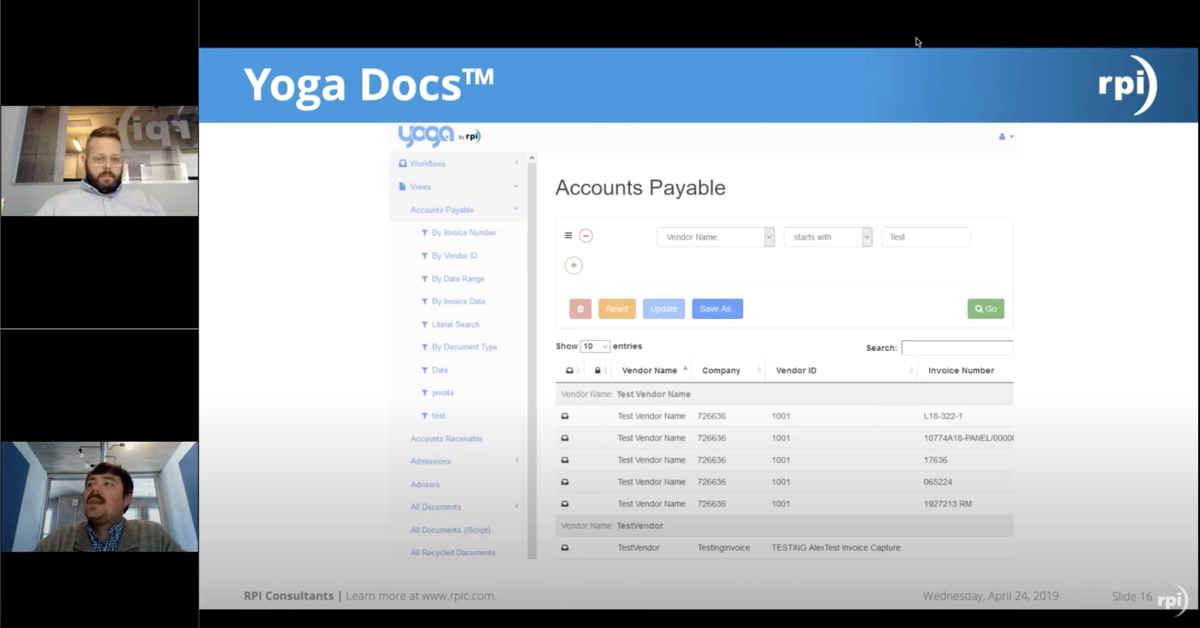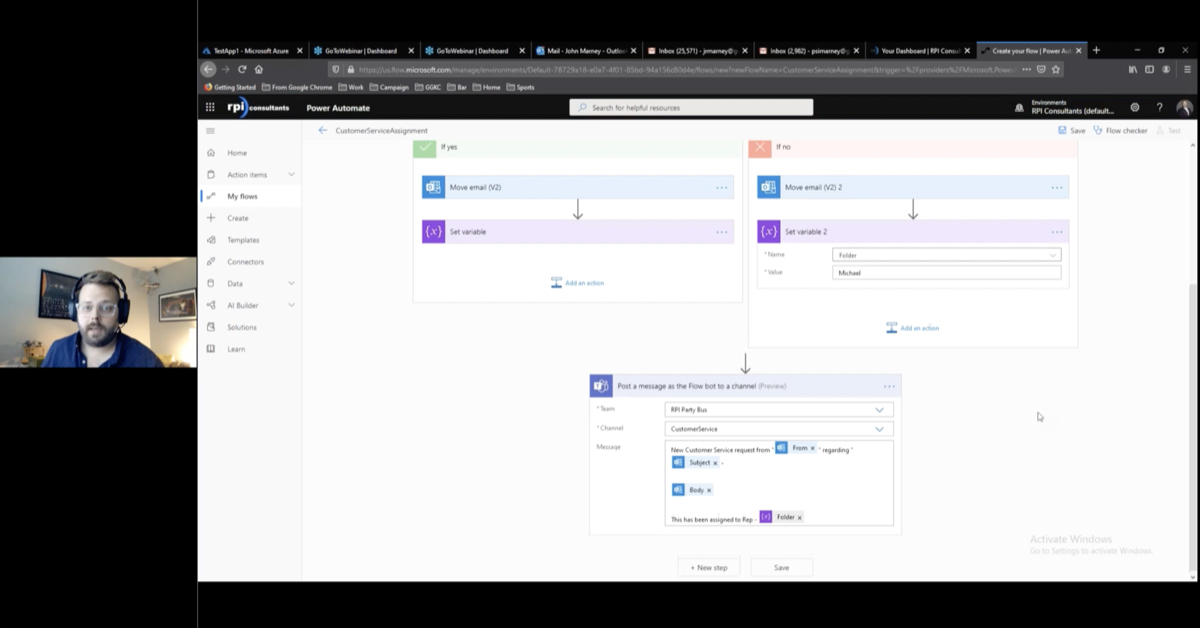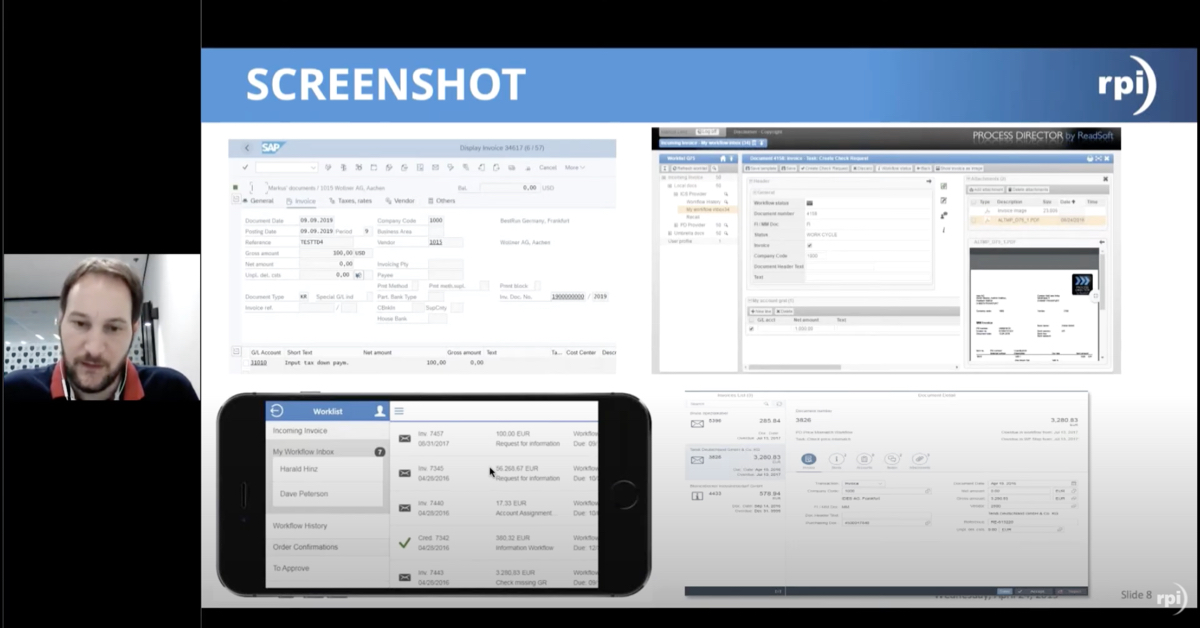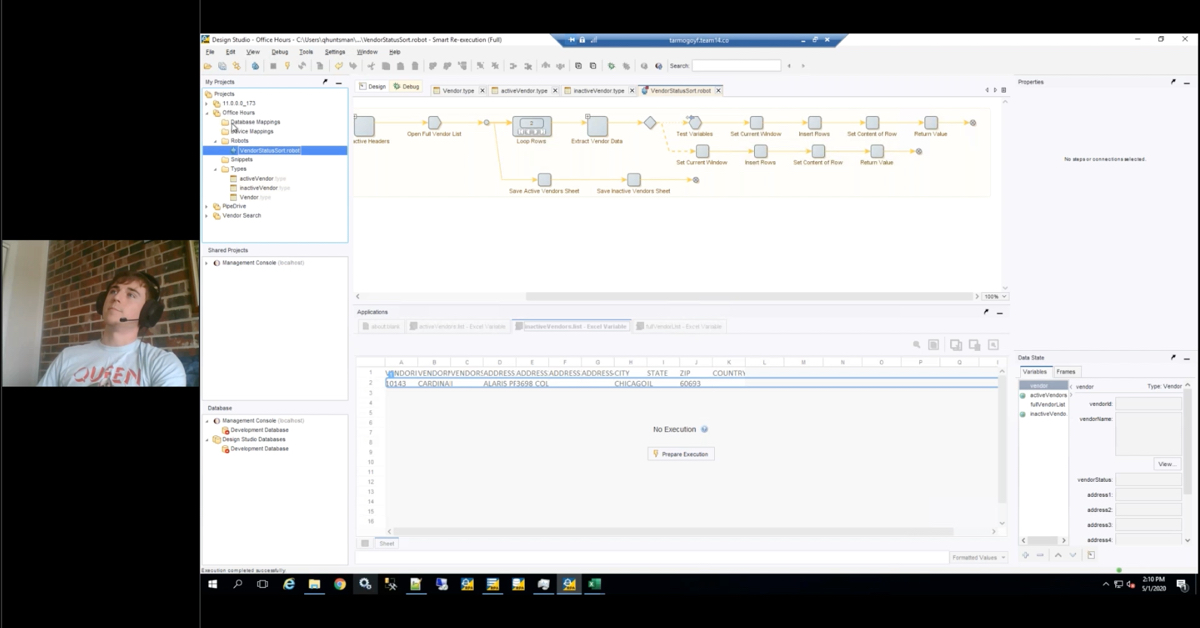Alex Lindsey:
Hello and welcome to another Webinar Wednesday with RPI Consultants. We are going to be talking about the latest and greatest updates for Brainware 5.9 but before we do, we have to talk about a few boring things. First and foremost, this is going to be recorded and then put up on our website YouTube at a later date. If you are on the presentation right now the deck will be distributed to you. If you have questions at any point during the presentation, please put them in the GotoWebinar. We do have moderators standing by to take those questions and if you have any ideas for future webinars, we’d be happy to hear if there’s any kind of content or topic that you’d like to cover, we’d be happy to do a Webinar on it.
Now, before we get in fully into this, we do have another webinar today. Today my cohorts, John Marney and Michael Hopkins are going to be talking about how to automate document indexing barcodes. It may seem straightforward and simple, but there’s a lot of really cool stuff you can do with it that maybe you haven’t explored yet. And then next month, Wednesday, April 3rd, we’re going to be talking about our brand new project methodology. An overview with some of our project coordinators. So if you’ve worked with us in the past, you might see some familiar faces. And I’ll be covering in accounts payable reporting and the fun things you can do there. A little bit about myself. My name is Alex Lindsey. I’m a senior solution architect with RPI consultants. I’ve been working in this space and with these software suites for over six years now covering content management, workflow processing, weird solutions and things like that with a focus on accounts payable as well. And I also moonlight as a whiskey distiller.
Few things on the agenda today, we’re going to talk a little bit about RPI consultants, what we do, how we can help you. We are going to cover Brainware by Hyland just an overview. So if you’re not familiar with Brainware, we’ll just do that real quick to give you a high level overview, jump into the updates for Brainware 5.9, the overall software platform. And they get a little bit more specific with Brainware for invoices 3.1 and Brainware for transcripts 2.3 and then we’ll open it up for questions after that. So a little bit about RPI consultants. So we are a full services, a software services firm. We have over 80 full time consultants. That number is continuing to grow. We have offices located in Baltimore, Tampa and right here in Kansas City, Missouri.
Our services range from upgrades to manage services, to solution design, one off, ad hocs, anything like that. And we are licensed software re-sellers and service providers for the following software’s perceptive OnBase, Brainware all roll up under the Hyland brand as well as Kofax and in for philosophy, the OnBase product specifically, that includes OnBase, Brainware and Perceptive software. We’ve worked with a lot of these quite a bit and we’d be happy to talk to you about health checks, upgrades any kind of custom integration development need and particularly around the AP accounts payable, supply chain management, human resources, or if there’s just a one off weird solution you’d like to that out, we’d be happy to talk to you guys. So jumping right into the actual content itself, Brainware by Hyland, what is it essentially, and we’ll just kind of cover this real quick.
It is at its core, it’s a very powerful extraction engine. It handles a lot of external data validations of talking to different systems. It has a thick and thin client. So for your end users, that is the verifier, which you’re probably most familiar with or the web verifier is various integration points as well. So ways to get data and documents in and ways to get data documents out. It’s also got a very powerful reporting tool called visibility. I’m personally a fan of it. I will cover some of that in the next Webinar next month. But it gives you a high level overview specific to invoice processing or transcript processing as well as just the overall system analysis. And it is highly scalable. You can use this, you can use Brainware essentially, do not just do one solution, but if you have automation needs and other areas where you can extract data and validated and get something else for other types of documents other than transcripts or invoices.
It can be used for all of those things. It is highly trainable and can do quite a bit. One thing to call out because there’s been so many changes in this industry and with these specific softwares over the years, we are going to officially call this Brainware and the Hylander, it was formerly known as Brainware and then it changed to Perceptive Intelligent Capture. And for the invoices it was intelligent capture for invoices and transcripts, from here on out I have no idea what that means. It’s just going to be Brainware, Brainware for Invoices, Brainware for Transcripts. So how it kind of works in this little diagram here. You have a way to capture your documents that can come from a number of different ways. Email import, scanned directly, the documents come in. It then goes through an extraction and classification process.
So what that basically means is if you send a document in the Brainware engine is going to read through that document and extract all the values that it can, the pertinent values, it’s then going to classify those values to what it needs to be. So if you’re thinking about an invoice, for instance, it’s just going to try to find invoice number, invoice date, invoice amount, the vendor, supplier information, things like that. It’s trying to classify what that is and based on a confidence threshold, it’s going to decide whether it needs to go through verification or final validation. Verification basically means, and this is where your users have quite a bit of input and where they do most of the work, they need to validate the information and verify that it’s correct on the document itself. So whatever document you’re processing, they’re going in and saying, yes, that’s correct. No, that’s not correct.
There’s additional look ups that can be done as well to verify that information from an accounting system or an HRS system, something like that. After that, it goes through a final validation, at which point it gets integrated or exported into an ERP and accounting system, an HRS system, a transmission system, whatever basically system that you need to get this document and data or one or the other into it can basically push that information in. So I’ve talked a little bit about Brainware for Invoices. We covered that quite a bit. There’s also Brainware for transcripts, which is a great, great solution within Brainware. These are more the productized solutions that we work with more closely, but we also do custom solutions for Brainware, for instance, a mail room solution where you’re getting a lot of documents in and you need to basically pull some light information off the documents and decide where they need to go within your company or department.
Human Resources oftentimes can have a lot of forms associated with it. Using Brainware to automate that process and extract that information and get it into a workflow system is also important as well as packing slips where you can extract values, use the OCR engine to extract out values off of the packing slip document, index the document and just get it into the system. So enough about Brainware as a whole. If you’re on this webinar you probably already know what it is. So what’s new in Brainware 5.9?
First and foremost web services, this has been a long time coming for this products. Essentially what that basically means for you as an Admin in particular, there are a lot of options for enhanced data integration. It is a rest based API, meaning that we basically communicate with an external API. So in accounting system or a student information system for instance, if you have an open API or if you build one for instance, we can communicate with that. You can use that to essentially capture documents, upload master data. It also does if you think about it and a big thing with this product and a lot of things that we talk about with a lot of our clients is how real time is the data validation. So when I walked through that example with the invoices specifically, it goes through a validation process where it’s bouncing off either in the past it’s always bounced off a pool of data.
Is this the correct vendor based on this address or remit to address things like that? That’s based on a pool in the past where it was uploaded overnight or on a recurring basis with the web service integration, you can do that more real time. I will say one caveat with that is if you’re doing specific to invoices, purchase order line, pairing, extraction and pairing, that we would still want a pool just because there can be just mountains and mountains of data in the system and that could actually have quite a drag on that. But for everything else, it is more of a real-time extraction validation so that when you’re processing and you’re automating this process, there’s no hangups through hitting your accounting system correctly. The other piece of this and a big reason that they did this, from the Hyland, they did a great job with it.
Is this a better output? Basically meaning Brainware by Hyland can integrate much better now when it does a hand off to a perceptive software or on base. So if you’re going into a workflow system, if you’re extracting values from and push into workflow for approvals or review or anything like that, that hand off between the systems happens a lot easier. If you were using Brainware specifically, you just go directly into assist another system and no workflow is like if you have a workflow system for and for instance, the output there is also improved because you have a lot of options for API integration.
So that was the big one. Some of the other bigger features I’d like to call out. And again, these are all listed in the release notes on docs.hyland.com essentially it now supports windows and SQL server 2016. That’s kind of a big one. That was a big deal when that needed to happen sooner rather than later. And they did a great job of getting the supportability there. Also introduced Abbyy Fine Reader 11. So that’s essentially the back end engine that’s running a lot of the extraction process or what that basically means. It’s an improved OCR engine. You’re going to get better extraction results that are rendering, things like that. And more importantly, it’s a little bit nicer to VM. So if you’re in more of a hosted environments, it’s a lot easier to work with. The software is a little bit more lightweight when it comes to this, before, if you have brain where you pretty much have to have a dedicated server just because of the processing power that goes with Brainware itself.
Now it’s a little, slightly more lightweights. It plays a little bit nicer with virtual machines. It also introduced Document Filters Integration. What that basically does it fixes a lot of rendering issues. So if a document was imported sometimes, and this is some of the bug fixes, if you got from a specific PDF file where certain things just weren’t rendered or displayed, it also greatly improve the extraction. So if documents would sometimes come in and you get two words that were bundled together and that would get classified in one field. It fits a lot of those issues by introducing Document Filters Integration.
Another thing to really call out similar to the other thing I mentioned earlier with Windows 2016, essentially SQL server is discontinued for 2008 R2 and 2012 SP2. So if you were on that, it’s in your moving 22.9. It’s probably a good time to look at your hardware and update those values as well. Other big thing that was introduced and fixed within 5.9 has to do with the verifier and the web verifier specifically. I will say that the web verifier in 5.9 is a lot more seamless. First off, the timeout error, there was a big time out error that happened a lot with the invoice processing with the vendor search where it would time out based on the data that was hitting. And that had to do just basically what the website just taking a long time, they fixed that issue.
A wet verifier now is a lot easier to use. It’s a lot easier to implement and maintain as well. There’s also process within the reclassification of documents themselves where essentially if you reclassified a document in a certain way to avoid manual entry. It would shoot out some certain errors. Some of you may be familiar with it. It’s fixed now within web verifier and for verifiers specifically in 5.9, there were a number of a shortcut issues that have been resolved. For instance, the F1 key going to help, things like that. So if you do like to use hot keys, the latest version should help that quite a bit. So those are some of the big things and just the overall software package Brainware 5.9. The look and feel is still pretty similar but the extraction results are really good and if you’re looking to move to more of a web based processing for your end users by using web verifier, I’d highly encourage you to explore that as well.
So what’s new in Brainware for Invoices 3.1? A lot of these kind of go hand with Brainware 5.9 but essentially there’s improved extraction results. So if you are sending your invoices in right now, you’re going to get a lot better results when it comes to getting your invoice header information. It’s a little bit more intelligent because of the Abbyy Fine Reader 11, it is going to be a little bit more intelligent and a little bit more precise when it’s getting those values off of your invoice documents. Obviously image quality has a play in that as well, and the data that you have available to verify that information. But essentially we’ve noticed a lot of improved extraction results. You also have the ability to OCR payment terms off of the invoice document itself, before that was not really an option before.
A lot of times that payment term information is based on the invoice date and specific to your vendor itself that says, “Hey, this is net 30 days.” Things like that, that’s still in place. But if you have a subset of vendors that that puts the payment terms on there and you’d rather extract the information there, you can now do that within Brainware for invoices 3.1. You can also restrict PO number extraction to just the first page. That may sound kind of intuitive and kind of like a duh moment but when you think about it in how the process works for Brainware where it tries to extract all the information off a document so you can have a five page invoice, it’s still going to look everywhere. And if you have a certain purchase order number structure, it may find something on page three or five for instance, and say, “Hey, that might be the purchase order number.” By having this new rule in place in 3.1, you can now just say, okay, purchase order number, no matter what is always going to be on the first page.
So you’re basically going to get better extraction in more solid and confidence level extraction verification rules when it comes to the purchase order number, which again is going to have a downstream effect with your supplier information, things like that. There are a number of a rendering extraction fixes as well. I kind of mentioned this earlier more specifically to the header information as well as the verifier itself. You now have the ability to do invalid reasons where if you want to kind of skip the manual entry process, you can now use invalid reasons, and a little bit more of a configurable way as opposed to a custom way to do that. One thing I will call out as well for Brainware for Invoices 3.1 it can be used on version 5.7.1 or higher. But you must have Microsoft.net framework 4.6 installed to run Brainware for Invoices 3.1.
The other big piece, what’s new in Brainware for Transcripts 2.3, there are actually quite a bit of improvements in this specific solution offering. When it came to this latest iteration for transcripts, it is viable with Brainware 5.7 SPI all the way up to 5.9 obviously. It now supports multi-campus and district support. What that basically means if you have a campus code on your transcript documents themselves at the line level, it now supports the ability to do a multi campus extraction and validation at that point. It also has a number of different translations, so a date range terms, translations, if you have a date range of a specific course where they were from here to here. A lot of times the transcripts can have different verbiage when it comes to that and now has a translation engine to basically say, “Okay, I know that generally this means this and this is how it’s going to transmit to my student information system.”
It also does multi pass extraction now, which is also a really big deal. Multi pass extraction basically meaning that if you send the process through to extract certain values and then you send it back through again. So basically the engine is running and passing through it and basically rectifying the information a little bit more so that you’re getting improved results to go through the system and be transmitted out to your student information system as well. The last translation has really has to do with numerical grades. It now has the ability to translate numerical grades that are on the transcript documents themselves.
So in summary there’s quite a bit more out there. A lot of it is in super interesting information. If you look through the release notes and look through those documents that Hyland puts out when it comes to these new releases for 5.9 Brainware for Invoices 3.1 or Transcripts 2.3 A lot of it is just simple little bug fixes and rendering things, very specific items that are actually kind of boring. I love reading through it. But if there’s something specific that you’re not sure of and you want to find out, we highly encourage you to look at the release notes cause you may have something in your implementation right now is very specific to you that you may, that may be fixed in one of these. But I didn’t just want to cover the higher level items here for that. In summary that is Brainware 5.9. Now open it up for questions.
Speaker 2:
It’s like we don’t have any questions today Alex.
Alex Lindsey:
Thank you very much. Again, if you guys have any questions, please feel free to email us, if you have any other specific requests, also please reach out to us and I would encourage you to reach out to explore some of our other resources. We have a knowledge base where we update articles. We have our Yoga Flexible Software, which is kind of fun and on previous webinar recordings. It does sound like we have one question now.
Speaker 3:
The question was how long does it take to upgrade? I would answer probably both for Brainware 5.5.9 and the invoices project.
Alex Lindsey:
Specifically that a lot of times that can come down to how custom your solution is. But we’ve been doing upgrades at RPI for a very long time. Depending on your project plan, your availability of resources, what we typically do is set up a new server pre-prod if you will, where we would copy the software over, upgrade that software, you would then do UAT, and then there would be a cut over for go live. And that would be your new Brainware prod instance. I would say it takes him a range of like 12…yeah, I was going to say two to three months, but John’s yelling at me, about 12 weeks overall, we’ve got it pretty down pat. There’s always issues and upgrades, but we work through them pretty quickly and we’ve got a very smart team here that knows what they’re doing a little bit better than I do. All right. Thank you guys very much. Appreciate the question.









